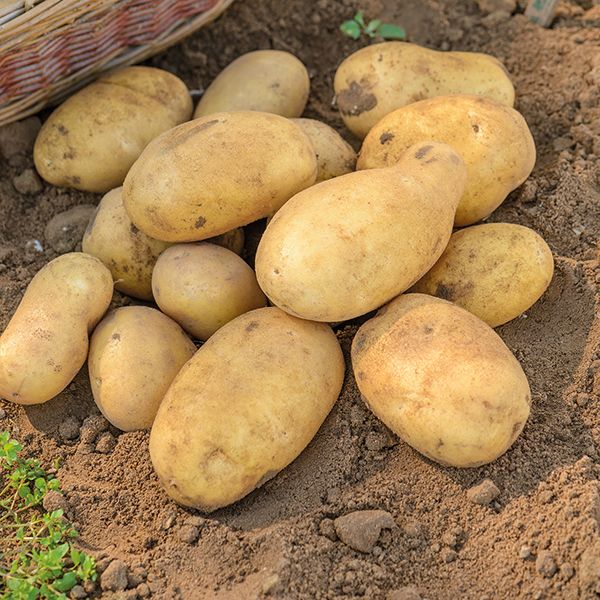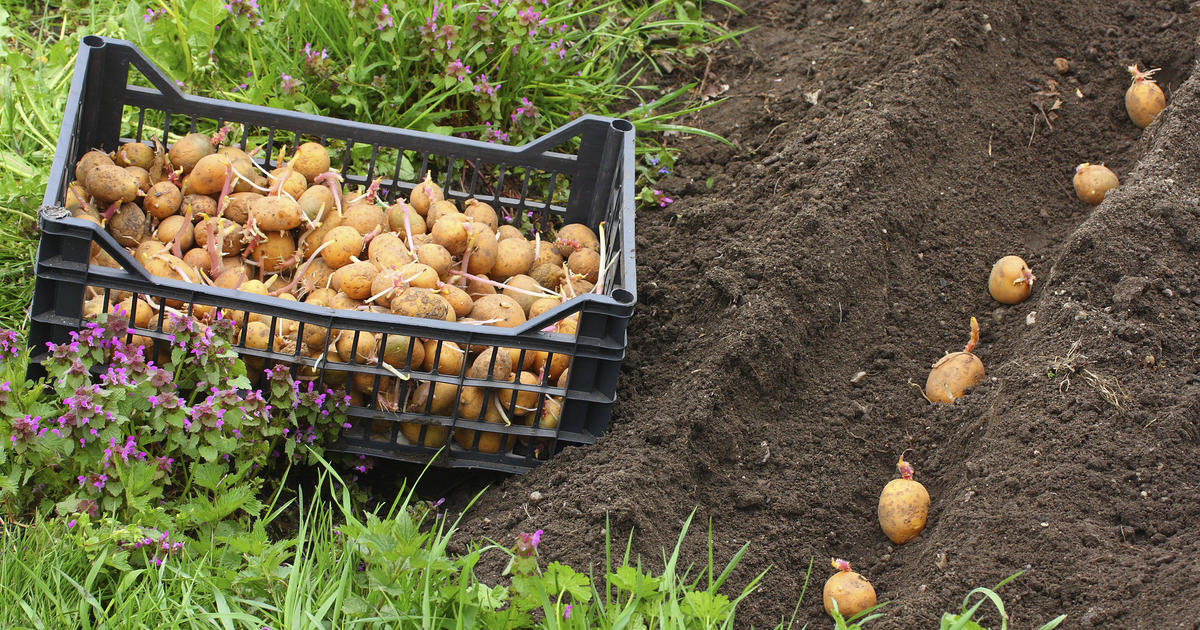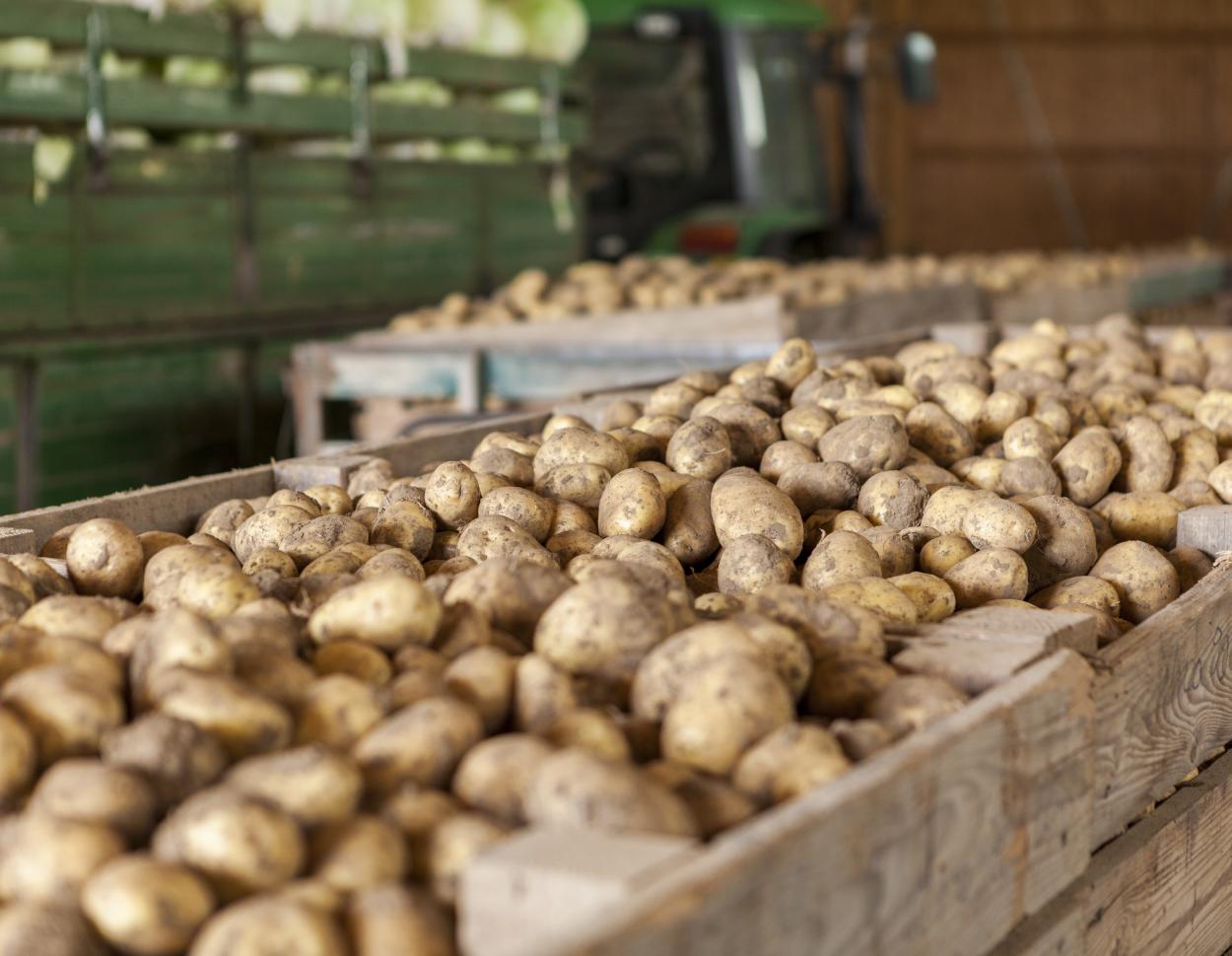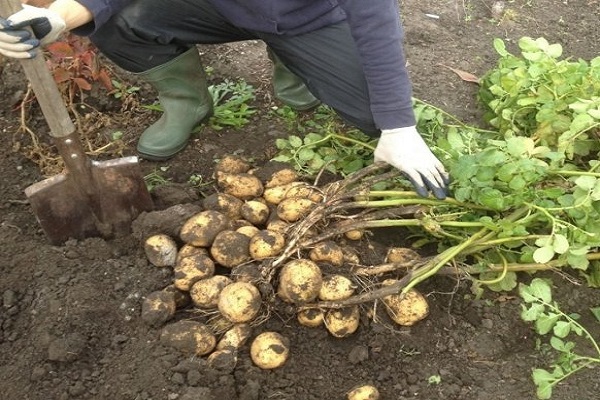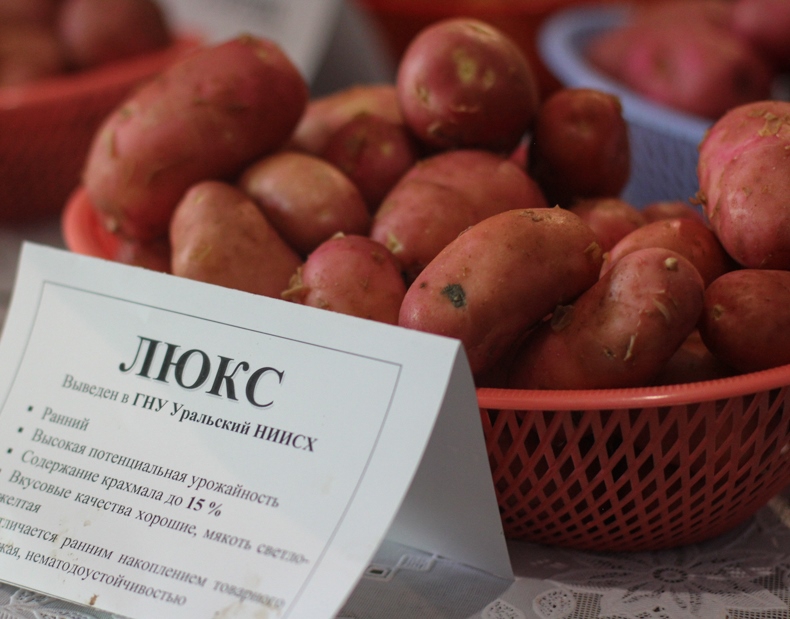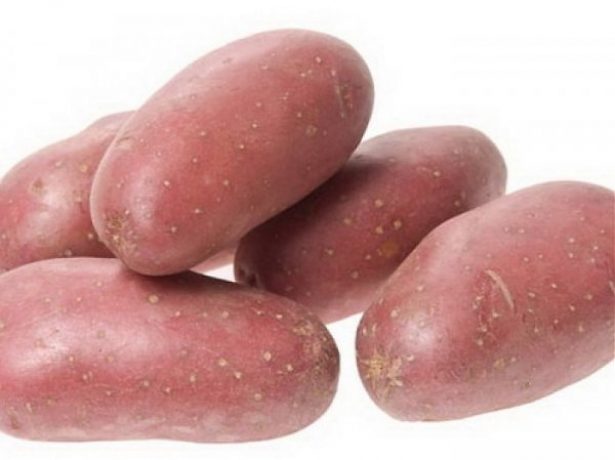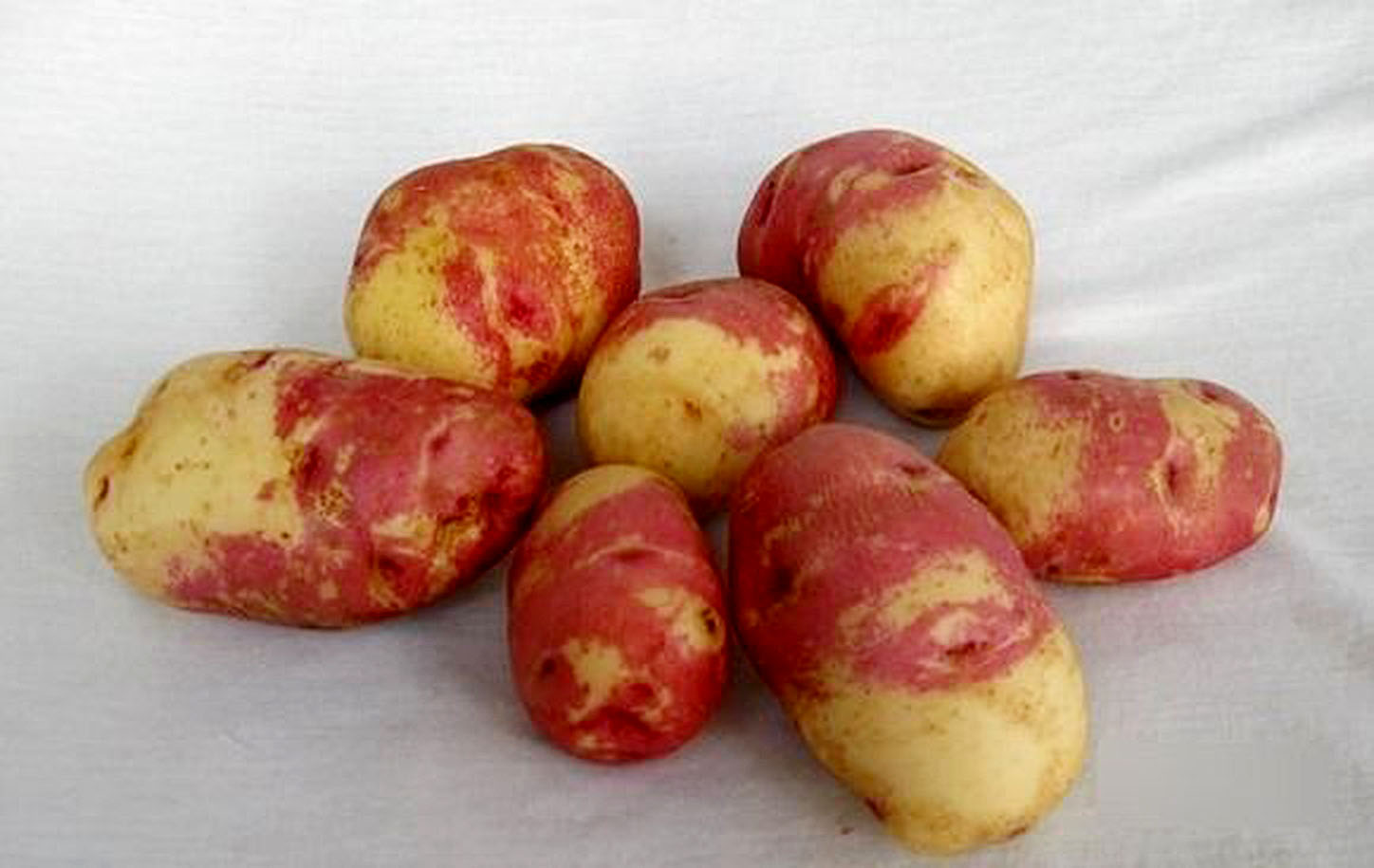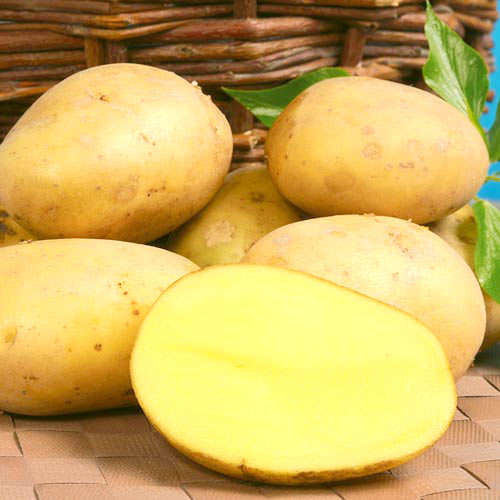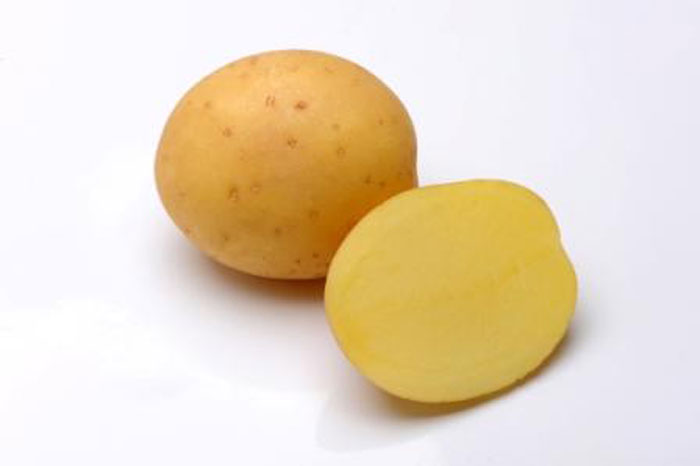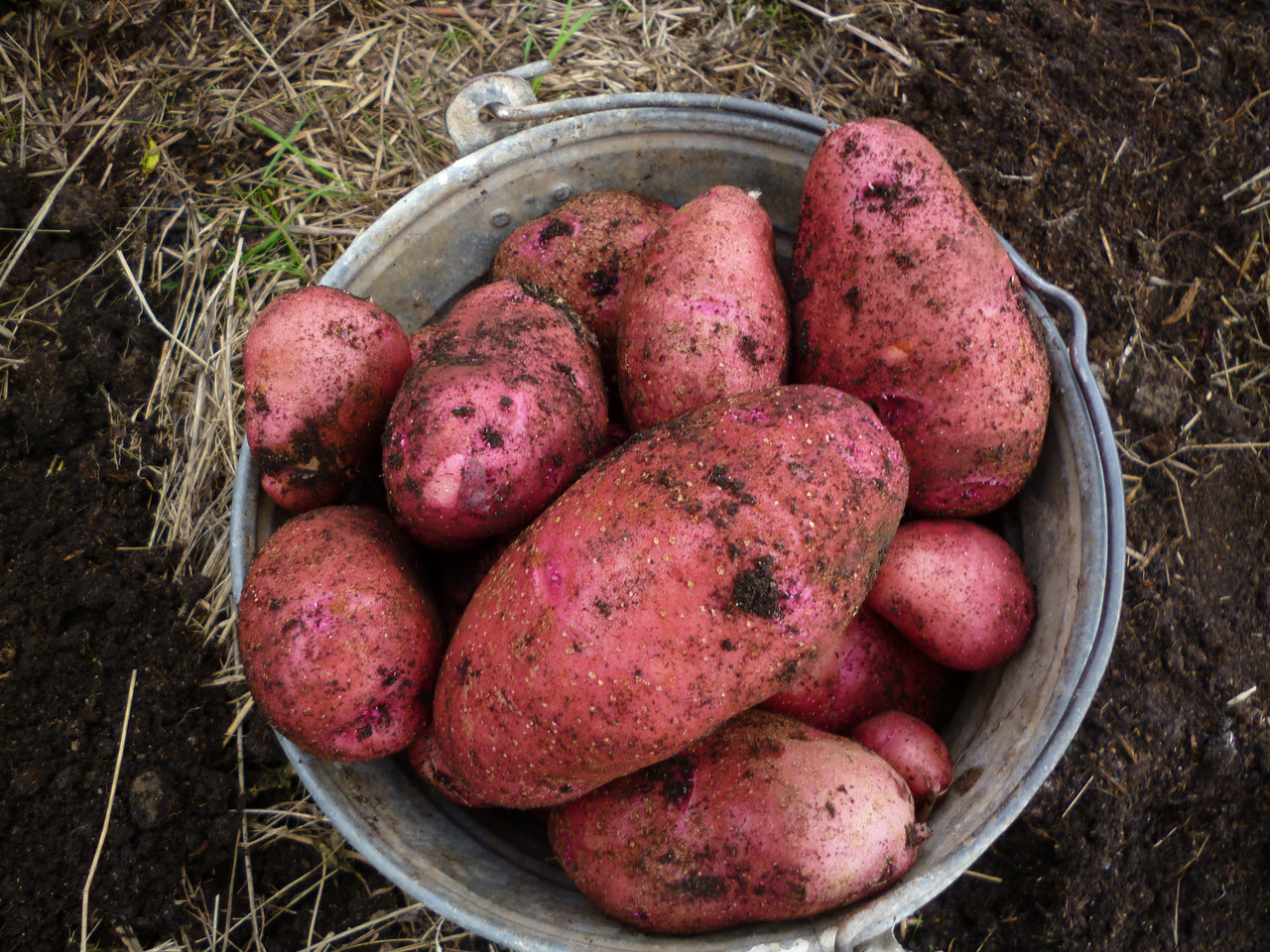Content:
Varietal Jelly potatoes are currently one of the most popular varieties among potatoes of foreign selection. Bred by the German breeders of the Europlant Pflanzenzucht GMBH company, the Jelli variety has been used for more than two decades for breeding both on farms, industrial production, and in private gardening in Russia.
The popularity of this mid-season variety is explained by the fact that it is undemanding to weather and soil conditions and can be cultivated even in the Volga-Vyatka region, where it was first tested. Distributed in the Central region of Russia, although it can be grown practically without restrictions in any territories and regions.
According to the reviews of those who cultivate this variety, Jelly is a potato, the characteristics of which fit into three main points: high yield, excellent keeping quality, good taste. It should be added that it is unpretentious in maintenance and, due to its attractive appearance and high commercial qualities, is well sold. Accordingly, it is attractive for commercial production.
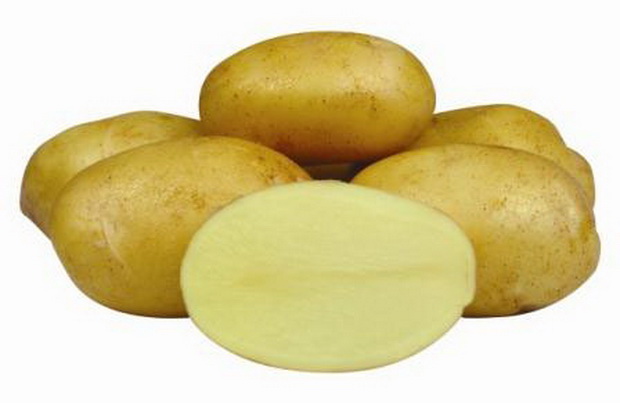
Yellow inside and out, Jelly potatoes are attractive not only externally, but also by other characteristics.
Now, in more detail about what the Julia potato is (the second name), we will present a full description of the variety and characteristics.
Description of the variety
Julia's potatoes, or Jelly, look pretty pretty. Smooth tubers of yellow and slightly unusual color in the bush are approximately the same in size. They are oval and slightly elongated; this potato has a smooth skin with slight roughness. The eyes on the tuber are few, weakly depressed into the surface. In terms of ripening and appearance, the roots of this variety are somewhat reminiscent of the variety of potatoes of the Ukrainian selection Jarella (the more correct name of the variety is POLISKE DZHERELO).
All tubers in the nest are approximately the same in weight - from 100 to 180 g. Despite the fact that the roots do not differ in large size, they grow together, the bush usually contains 15 or slightly more potatoes. There are almost no small potatoes, and due to the fact that the variety is not prone to degeneration, you can plant it annually and get consistently high yields without varietal renewal.
The inside of the tuber is the same yellow color, and it is colored more intensely than outside. Its taste is pronounced potato with a buttery aftertaste. The starch content is up to 18 percent, which is quite good compared to other varieties common today. For comparison, the Sheri variety has a starch percentage of 10 to 12. However, this is not the most starchy variety when compared, for example, with the Svitanok variety.
With medium starchiness, the pulp is quite dense, it does not boil during cooking. This potato is good for both first and second courses, as well as for making chips in industrial production, French fries.
Among the modern mid-season varieties, it is the Jelly potato variety that is currently in the lead. The description of the variety would be incomplete without adding that it reaches full technical ripeness in 90 days. It is within a month and a half that potatoes reach the maximum weight of tubers, which means they give the greatest yield. At the same time, he became a favorite of vegetable gardens and dachas because summer residents begin to dig in these potatoes much earlier.The first tubers are ready for consumption and are distinguished by their palatability already around mid to late June (depending on the region and planting time).
The yield is also influenced by weather and climatic conditions, soil quality. Producers call the maximum possible yield of half a ton per hectare (this is if you translate the harvest into industrial sizes). The average yield is considered to be a harvest of 160-190 centners per hectare.
The advantage of this variety is that it is very well stored - losses in the spring reach only 14 percent of the laying of the crop, which is a fairly high indicator of keeping quality. So storage of fully ripe tubers in a normal cellar is done without problems, does not affect the taste characteristics. Mechanical damage during transportation and storage of tubers does not affect the safety, since the wounds spontaneously heal and do not lead to further rotting of the tubers.
The bushes of this potato are erect, rather branched, of medium height. Large leaves with slight waviness and a compact corolla decorated with large white flowers.
Agricultural technology of cultivation
Like any other potato, the variety under consideration is "greened" before planting. In other words, the tubers are removed from the bins and kept in the light in a warm place, when a month or a half is left before planting. For this variety, germination before planting must be carried out until the potato sprouts from the awakened eyes crawl out by 2 cm. If there is a lack of seeds, the tubers are carefully cut, keeping a kidney at each site. Soaking in a manganese solution helps to decontaminate the seeds before planting. There are drugs on sale that stimulate growth.
A distinctive feature of this variety is its responsiveness to sufficiently moist soils. Although, at the same time, the variety tolerates minor droughts and a short-term lack of watering. This variety loves loamy and fertilized soils.
When growing, you need to be very careful about planting time. The variety is mid-season, so it is planted early enough. But planting in a cold soil, below 8 degrees, not only will not accelerate the maturation period, but in general it can negatively affect the development of plants. Therefore, it is necessary to plant seeds only after the establishment of warm and dry weather and in the most illuminated and open places. The cultivar loves soil that is neutral in terms of pH content of 5-5.5 percent.
The optimal predecessors are cabbage, green plants, cucumbers, the variety grows well after beets.
The spreading nature of the bush and its height dictate the planting rules: you can plant both in traditional holes and in grooves. The distance between the tubers, as well as the aisles, should be large, because the bushes will form powerful and large. Optimally, you should leave 85 cm between rows and 40 cm in a row.
For planting, organic matter is introduced, but not manure, but compost, mineral fertilizers are also needed. Many people add onion husks as protection against pests. Ash can be added to mineralize the soil.
In principle, the variety cannot be called extremely demanding to care for. In hot areas it needs to be watered. In temperate climatic zones there is enough natural humidity and precipitation.
The first small harrowing can be done even before the emergence of shoots, it will not take much time, but it will help fight weeds. Weeding and hilling - two or three times over the summer. The first time you can walk with a hoe immediately after the first shoots appear. Thus, weeds are thrown off, which climb out of the ground faster than cultivated seedlings. In addition, a little loosening will give the seedlings more oxygen.
In areas where there is a danger of night frost, it is better to sprinkle the sprouts with soil a little during the first weeding. This is not scary, on the contrary, the earth will cover the plants and will not allow them to perish, but they will still take their sprouts.
The second hilling should be done as high as possible, raking the ground as high as possible to the bushes. The more the ground is raised, the better the stolons are formed, which means that they will subsequently produce more tubers.
Harvesting is done in early to mid September. Place the potatoes in a dark, dry place for airing. For two weeks it lies, dries up and forms an even and denser rind. Then it is carefully lowered to the place of permanent storage.
If we compare this variety with other representatives of the nightshade family, then we can note among its positive characteristics that what
Jelly is not afraid of a number of diseases and pests that are standard for this family:
- not afraid of nematodes;
- does not suffer from potato cancer;
- not prone to damage by common scab;
- does not suffer from black legs;
- when making preparations containing copper, it resists late blight.
Important! Late blight is the only real threat to this plant, which can affect both its upper part and tubers. If, nevertheless, infection has occurred, the bush fell ill with late blight, it is necessary to immediately carry out treatment with copper oxychloride, Cuprosat, Acedil, Oxykh and the like.
Of the pests, potatoes are affected by the Colorado potato beetle and wireworm. The processing of this variety does not differ from other varieties - the same chemical methods are used.
Advantages and disadvantages of the Jelly variety
Summarizing what has been said, it can be noted that the Jelly variety is one of the best today when comparing the type of mid-season varieties. Its advantages include the following characteristics:
- high keeping quality;
- high average potato yield;
- excellent nutritional value, including the content of protein, trace elements, minerals in tubers, etc .;
- calibrated tubers;
- excellent commercial qualities, which makes this potato attractive for farming.
The downside of this variety is that this potato has a dense tuber and a low starch content. Therefore, it is not ideal for making mashed potatoes and other dishes that require high starchiness. No other shortcomings have been identified.
To fully appreciate the quality, advantages and disadvantages of this variety, we recommend buying it and planting it, at least for testing and comparison with older varieties known to summer residents.
